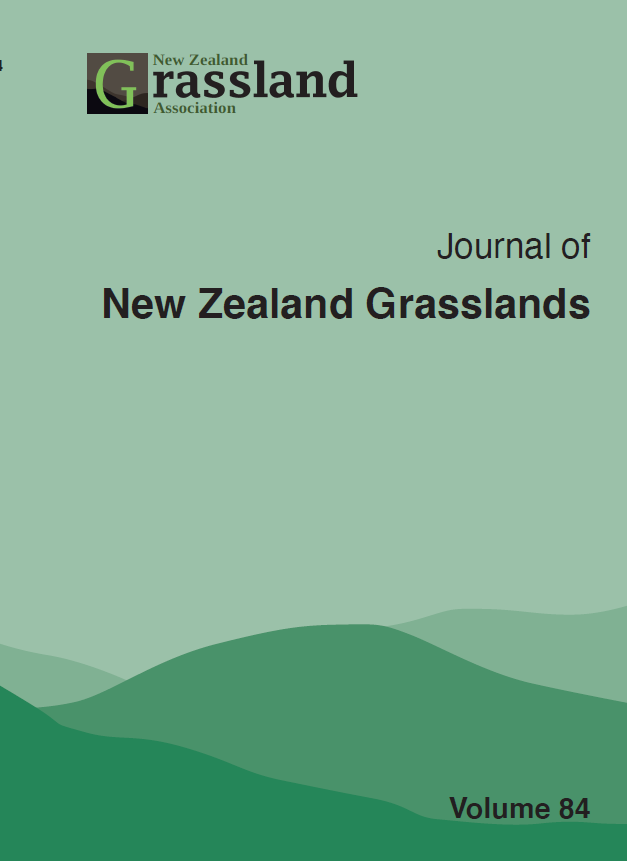Plantain dominated in mown mixed swards, but produced less than the original ryegrass-dominant sward
DOI:
https://doi.org/10.33584/jnzg.2022.84.3583Abstract
This trial determined the effect of compost on mixed species pasture. Existing (five year old) perennial ryegrass provided the control. A mixture of perennial ryegrass, white clover and plantain was sown into sprayed-out treatment plots, giving five replicates of six treatments. One treatment was direct drilled another was cultivated and drilled. The remaining three were spread with compost (50, 100 or 150 t/ha
wet weight) and cultivated. Plots were mown at 35 d intervals for two years with clippings returned to the sward. Although grass established well at 500 plants/m2 plantain quickly came to dominate in all renewed plots, at 55-61% of DM in year 1 and 57-79% of DM in year 2. Grass contributed 29-35% of DM in year 1 and 10-30% in year 2, with clover 5-8% in year 1 and 10-14% in year 2. Grass dominated control plots (73
and 82% DM, respectively), while clover contributed more DM in absence of plantain (22% and 17%). Compost did not affect production. Cultivation gave a slight advantage over direct drilling, but new swards produced <50% the total DM of the control (P<0.05). Substantial investment was involved, so rewards need to be considerable to recoup costs.
Downloads
Downloads
Published
How to Cite
License

This work is licensed under a Creative Commons Attribution-ShareAlike 4.0 International License.
Copyright
This work is licensed under a Creative Commons Attribution-Non Commercial-NoDerivatives 4.0 International License. Rights granted to the New Zealand Grassland Association through this agreement are non-exclusive. You are free to publish the work(s) elsewhere and no ownership is assumed by the NZGA when storing or curating an electronic version of the work(s). The author(s) will receive no monetary return from the Association for the use of material contained in the manuscript. If I am one of several co-authors, I hereby confirm that I am authorized by my co-authors to grant this Licence as their agent on their behalf. For the avoidance of doubt, this includes the rights to supply the article in electronic and online forms and systems.




